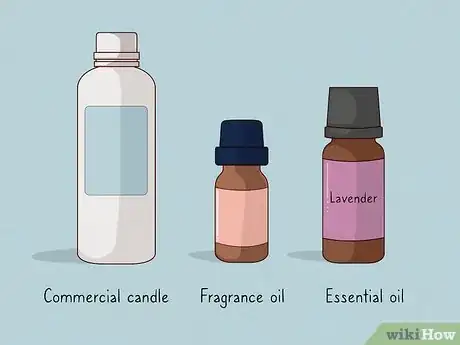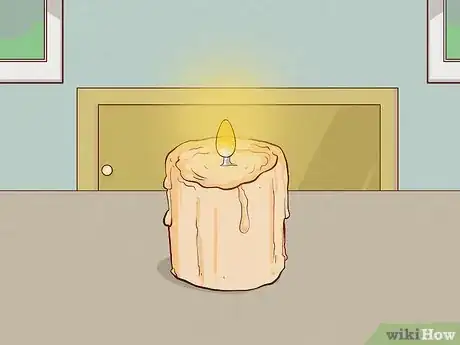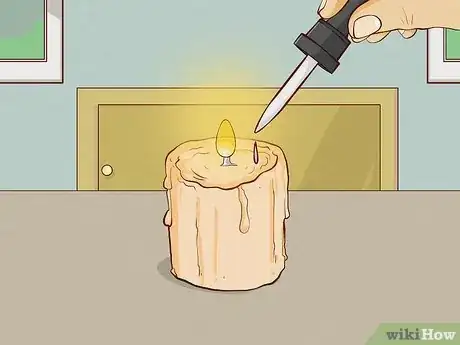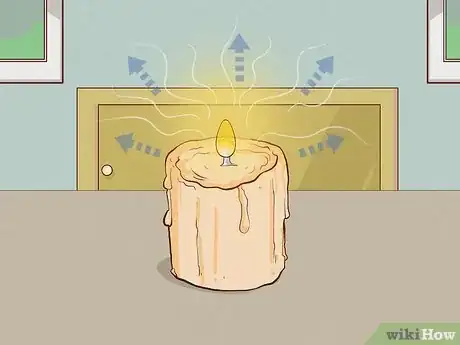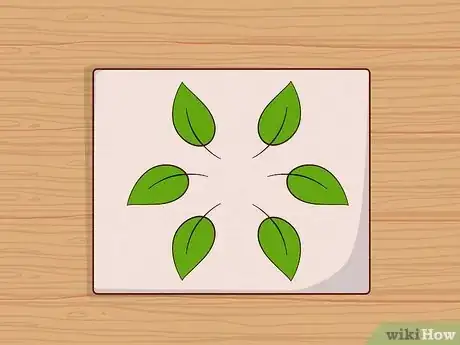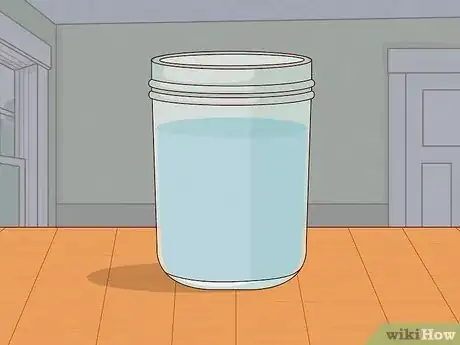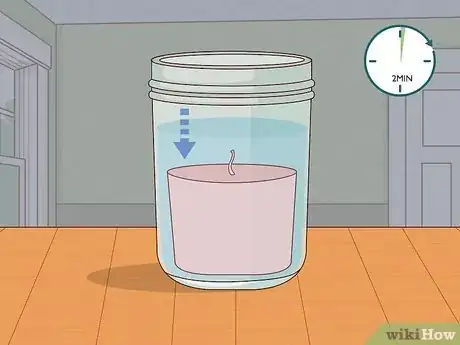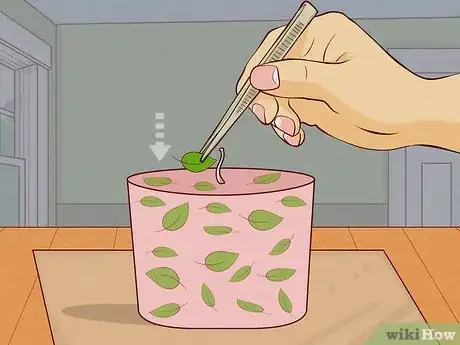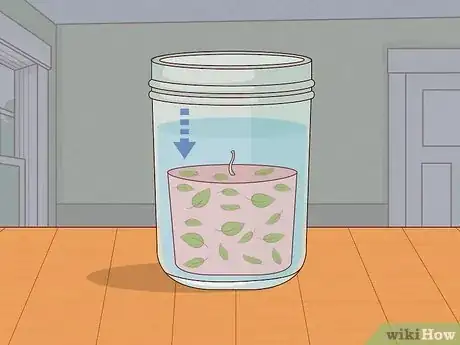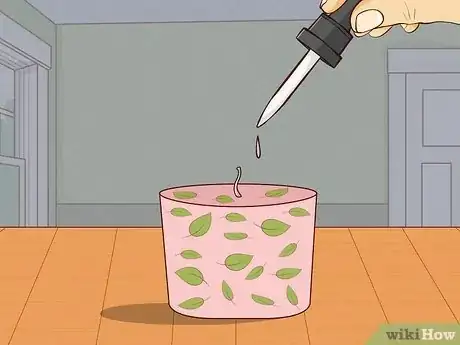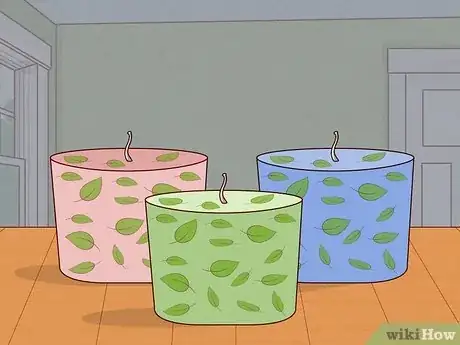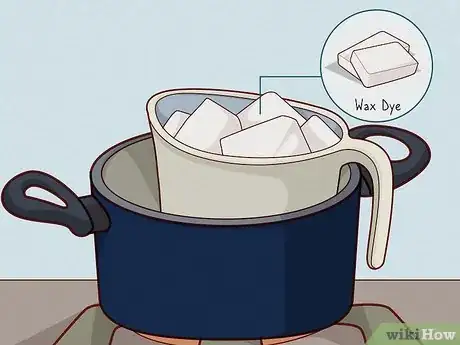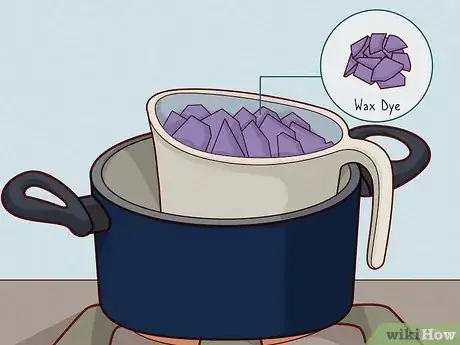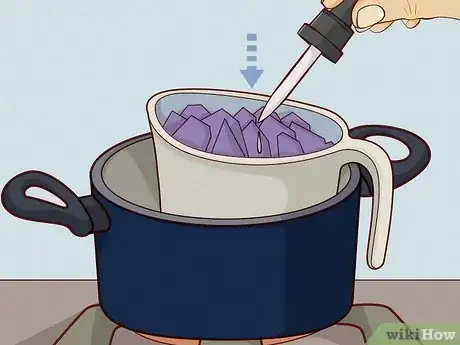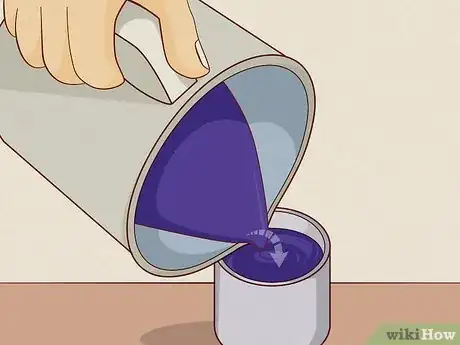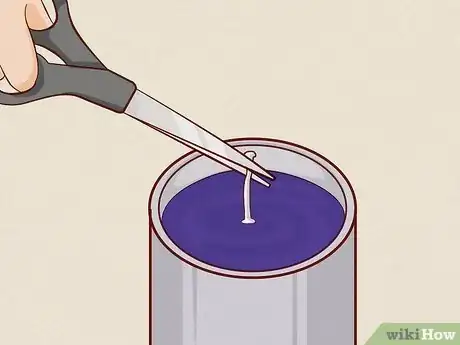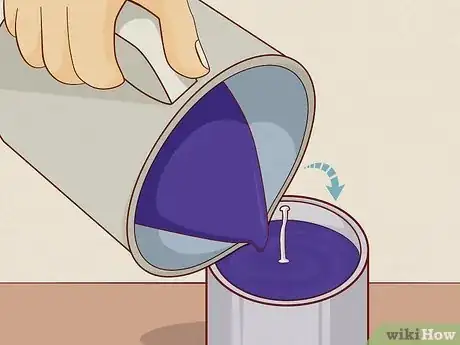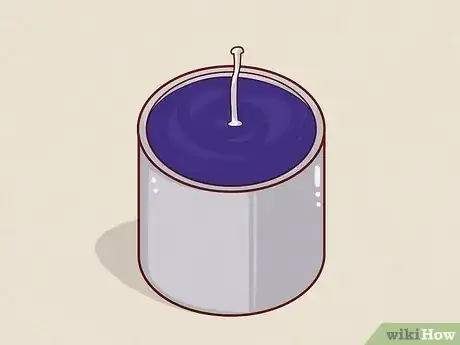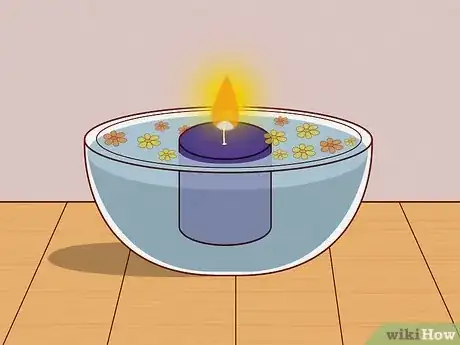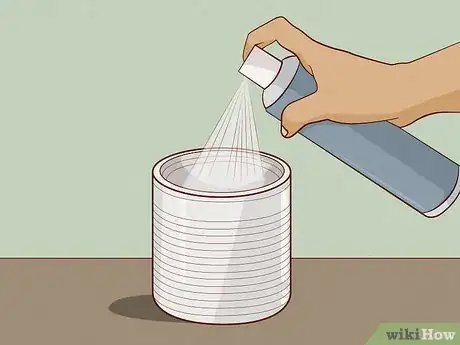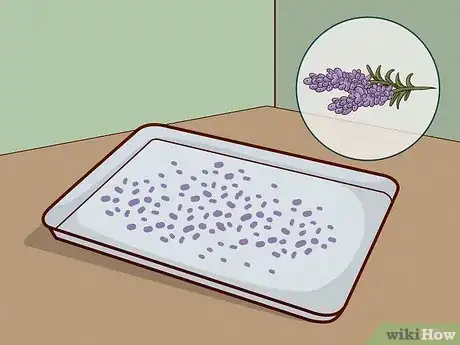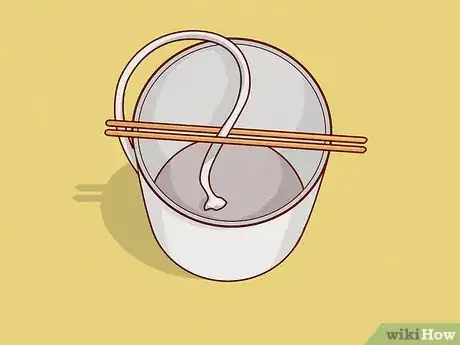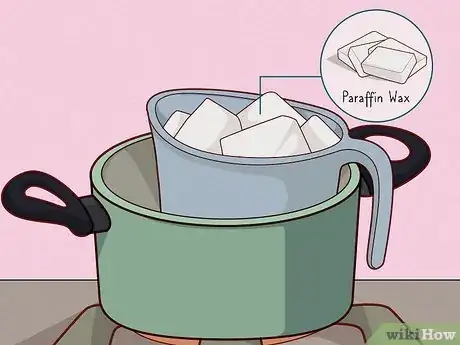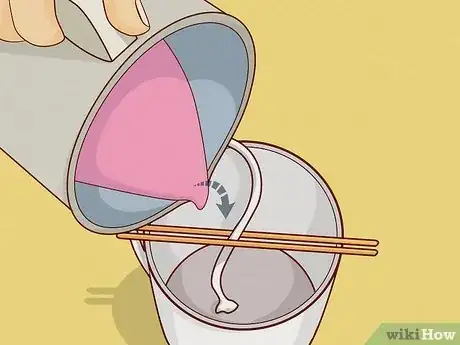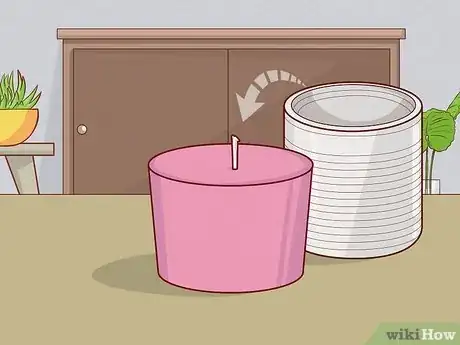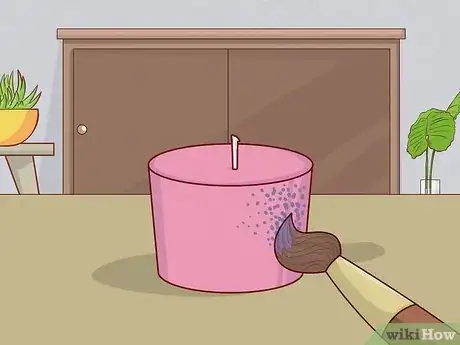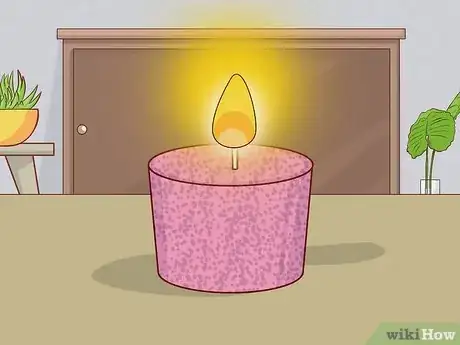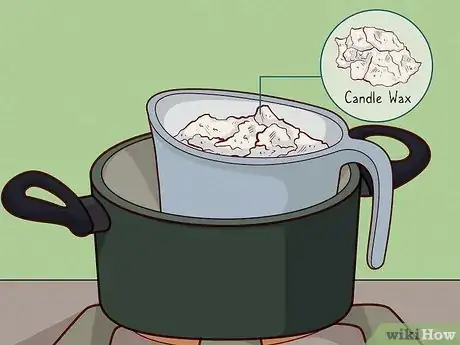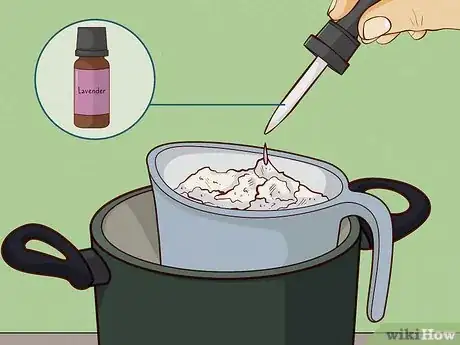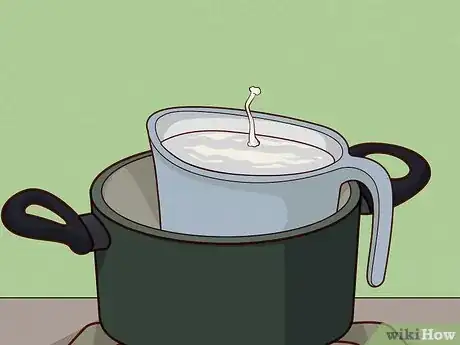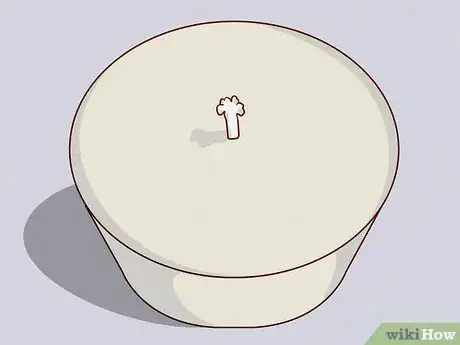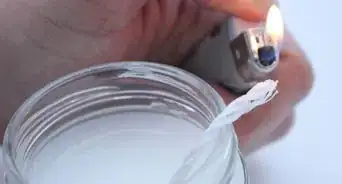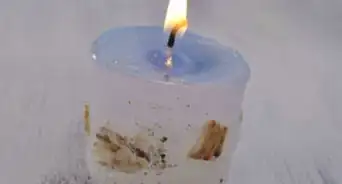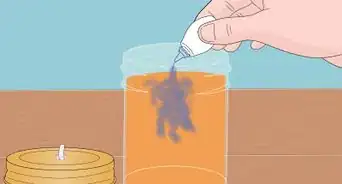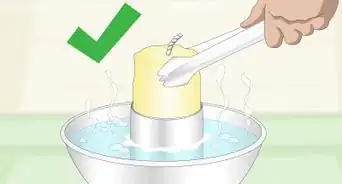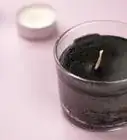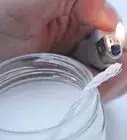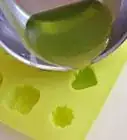This article was co-authored by Claire Donovan-Blackwood. Claire Donovan-Blackwood is an Arts & Crafts Specialist and CEO of Heart Handmade UK, a site dedicated to helping people live a happy, creative life. With over 13 years of experience, Claire uses art as a form of therapy and focuses on mindfulness in the making of art. She makes crafting easy and accessible for those she works with. Claire received her B.A. in Photography & Visual Imagery from The University of Huddersfield.
There are 9 references cited in this article, which can be found at the bottom of the page.
This article has been viewed 218,960 times.
Scented candles are used to enhance the ambiance of a room or event, as well as being used for helping to clean the air or ease breathing. Making scented candles can be as simple as adding scent to an existing candle or adding scent to a candle from scratch. Whichever way you prefer, here are some suggestions to try.
Steps
Simple Scent Addition
For the already-made candle without scent, this is a simple fix. It won't last long, so needs frequent re-addition, but it works well for a powerful burst of fragrance in the short-term.
-
1Light a fragrance-free candle. Allow it to burn until a small melted wax puddle forms around the flame area.[1]
- The candle should lack fragrance, else it may overpower or mix poorly with the scent you're adding.
-
2Use a pipette or dropper to add a single drop of essential into the melted wax puddle. Avoid placing the oil anywhere near the actual flame.[2]
-
3Expect the scent to begin wafting out as the candle continues to burn. Top up as often as needed.
Pressed Herb Scented Candles
Herbs (dried or fresh) that are macerated in molten wax will release a light fragrance as they're burned. This effect is heightened by the addition of essential oils.
-
1Consider designing the leaf pattern first. This will ensure that you arrange the leaves in a thoughtful way rather than quickly rushing to push them on. Look at at the leaves you have and imagine how they'll look and try to line them up in readiness for pressing on the candle.
-
2Fill the long jar with boiling water.
-
3Dip the candle into the water.[3] Hold it in place from the wick for 1 to 2 minutes. Ensure that it is all submerged.
-
4Remove from the jar and place on parchment paper. Place the leaves onto the softened candle surface, using tweezers. Press in place gently.
- Work quickly, once the wax solidifies, the leaves are stuck in place and no more can be added.
-
5Dip the candle into the hot water again. The leaves will be sealed behind a new layer of melted wax.
- Further dipping in the hot water will shift the pressed leaves further into the candle. Bear this in mind if adding more layers of leaves, as some will be deeper in, some closer to the outside if you approach this in several goes.
-
6Drip a few drops of essential oil down the sides of the candle before it solidifies. Aim for an even distribution. Let set.
-
7Repeat with as many candles as you'd like to make. These candles will keep for a very long time, but you may need to infuse more essential oil after long-term storage.
Scented Floating Candles
-
1Drop the paraffin wax into the double boiler or bain marie. Heat the water in the base compartment of the pan. Wait for the wax to slowly melt.[4]
-
2Add a little amount of wax dye disc to the melting wax. Add more if you wish–-the more dye added, the deeper the color will appear.
-
3Add the scent. While the wax is boiling, add either a few drops of essential oil or wax perfume.[5]
-
4Remove the top pan from the heat. Pour the melted wax into the molds. Leave to set slightly.
-
5Cut the wick. Cut into 5cm/2 inch lengths. Push each wick into the center of the setting wax.
-
6Top up with more wax if needed. The wax will shrink a bit as it sets; if you think it needs a bit more, feel free to add a little more melted wax as a top-up.
-
7Let set.
-
8Use the candles as follows:
- Fill a shallow bowl with water.
- Float the candles on top.
- Add a few flat-headed flowers in between the floating candles for a prettier look.
- Light the candles when needed.
- Place the display in the middle of a table or somewhere else where a glowing decorative element is needed.
Lavender Scented Candles
-
1Prepare the mold. Spray the soup can with mold release or silicone spray.
-
2Spread the lavender flowers across a baking sheet. Put to one side.
-
3Prepare the wick:
- Cut the wick. Cut it at least 2 inches/5cm longer than the height of the can mold.
- Attach the weight to the bottom of the wick.
- Attach the other end of the wick to the wick holder. The wick should feel taut and when it is rested at the top of the mold, there should be no slack.
-
4Melt the medium point paraffin wax first. Place in a double boiler and heat the water.[6] Heat until it reaches between 185ºF-190ºF. Then add:
- The purple crayon pieces;
- The lavender essential oil;
- Then stir.
-
5Pour the melted wax into the soup can mold. Use a ladle to transfer the wax from the double boiler. Set aside to cool and harden. This will take about 3 hours.
-
6Remove the candle from the mold. To even the base, place the candle base on a hot skillet or frying pan for a few seconds.
-
7Add the flowers to the candle.[7]
- Melt the high melting point paraffin wax in the double boiler. Melt until it reaches 200ºF to 210ºF.
- Paint the exterior of the candle with this melted wax.
- Immediately roll the candle over the baking sheet of lavender flowers. Many will instantly adhere to the sides of the candle. Let set.
-
8Done. The candle is ready for use or it can be stored long-term.
Scenting the Wick
This method provides a fairly long-lasting source of fragrance. It's only suitable where you're making the whole candle from scratch.
-
1Melt a little candle wax.
-
2Add a few drops of the desired essential oil.
-
3Prime the wicks. To do this, immerse the wicks in the melted wax for about 20 minutes. Then remove and pull them straight. Lay on parchment or greaseproof paper to let them harden.[8]
-
4Make candles. Use the scent-primed wicks.
Community Q&A
-
QuestionCan I use vanilla extract?
 Community AnswerVanilla extract can be added to make scented wax. Check out Add Scent to a Candle for some tips.
Community AnswerVanilla extract can be added to make scented wax. Check out Add Scent to a Candle for some tips.
Warnings
- Never leave lit candles unattended; blow them out if nobody is still around to keep an eye on them.⧼thumbs_response⧽
- Some people are allergic to scented products.⧼thumbs_response⧽
- Some scents are off-putting to some people––be sure to take everyone's preferences into account when adding scents.⧼thumbs_response⧽
Things You'll Need
Simple Scent Addition
- Candles without fragrance
- Essential oil
- Pipette or dropper
Pressed Herb Scented Candles
- Pressed herb leaves or flowers
- Tall container, such as a preserving jar - must be able to withstand boiling water
- Boiling water
- Long, thick candles (as many as you want to make)
- Parchment paper
- Tweezers
- Essential oils, match to the herbs
Scented Floating Candles
- 500g/ 1 lb paraffin wax
- Double boiler/bain marie
- Wax dye discs (in colors of choice, two different colors is a good idea)
- Wax perfume or essential oils
- Miniature tart cases made from tin or aluminum; or use silicone or similar molds
- 50cm/ 18" primed wick
- Flat headed flowers for floating among the candles (optional)
Lavender Scented Candles
- 1 pound paraffin wax with medium melting point (130ºF to 145ºF)
- 1/4 pound paraffin wax with a high melting point (over 145ºF)
- 6 drops lavender essential oil
- 1 purple crayon, paper removed and cut into small pieces
- 1/2 cup crushed lavender flowers
- Double boiler/bain marie
- Spoon for stirring
- Empty soup can
- Mild release or silicone spray
- 30- or 32-ply flat-braided wick
- Wick holder (pencil, chopstick, etc.)
- Wick weight (such as a small bolt)
- Baking sheet
- Small paintbrush
- Skillet or frying pan
- Candle base (optional)
- Ladle
Scenting the Wick
- Essential oils
- Candle wax
- Wicks
- Parchment or greaseproof paper
- General candle making supplies
References
- ↑ https://thehomemadeexperiment.com/diy-scented-votive-candles/
- ↑ https://thehomemadeexperiment.com/diy-scented-votive-candles/
- ↑ https://www.thriftyfun.com/tf473563.tip.html
- ↑ https://www.artofmanliness.com/articles/diy-chandlery-how-to-make-your-own-candles/
- ↑ https://www.artofmanliness.com/articles/diy-chandlery-how-to-make-your-own-candles/
- ↑ https://blog.freepeople.com/2014/08/summer-meets-fall-pressed-flower-candles/
- ↑ https://www.motherearthliving.com/healthy-home/pressed-herb-candle-recipe-zmaz06onzgoe
- ↑ http://www.howtomakecandles.info/cm_article.asp?ID=WICK0008
- Andi Clevely and Katherine Richmond, The Cook's Encyclopedia of Herbs, p. 218, (2000), ISBN 0-7548-0617-0 – research source
- Deborah Schneebeli-Morrell, The Victorian Book of Potions and Perfumes, p.18, (1996), ISBN 1-85833-503-5 – research source
- Catherine Bardey, Making Candles & Potpourri, p. 45 and pp.70-71, (1999), ISBN 3-8290-6604-X – research source
About This Article
The simplest way to make a scented candle is to add fragrance to a regular candle. Choose a fragrance option such as an essential oil, a synthetic fragrance oil, or a commercial candle-making scent. Light your candle and let it burn until there’s a large puddle of melted wax around the base of the wick. Then add a drop of your scent to the melted wax using a dropper or pipette. Take care not to get the scent too close to the flame, since it could catch fire. The scent should start to diffuse as the candle keeps burning. Add more drops of scent as needed. To learn how to use other ingredients, like spices and herbs, to add scent to a candle, read on!
